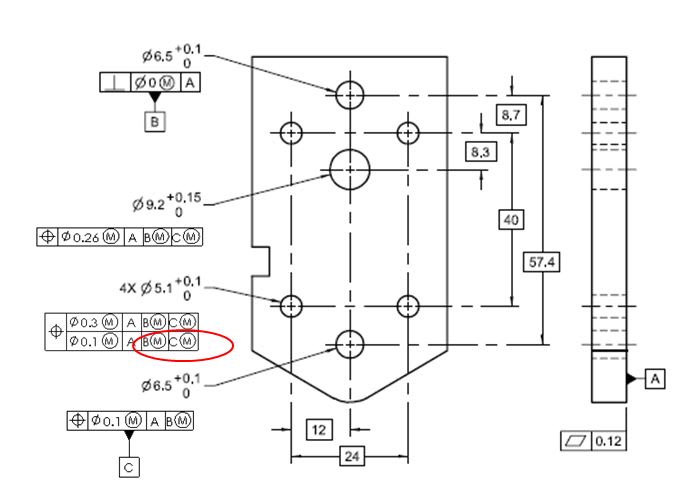aniiben,
The only thing that additional datums in the FRTZF (lower FCF) of a composite tolerance can do is constrain additional rotational DOF. The addition of B and C in the FRTZF (lower FCF) constrains rotation of the pattern's tolerance zone governed by the FRTZF and only allows it to translate relative to the DRF inside the PLTZF. Note that my conventions assume the z-axis is perpendicular to the datum A.
If only [A] were called out, it constrains the 2 rotational DOF about A (u,v) (ie: pattern axes are held perpendicular to A) but it would allow both translation (x,y,z) and rotation (w) of the FRTZF. (see Fig 7-38 and 7-41))
If only [A|B(M)] were called out, since datum B does not constrain any additional rotational DOF that is not already constrained by datum A, I believe it would still allow both translation (x,y,z) and rotation (w) of the FRTZF. There is no example for this in the standard, however it seems to me to be a logical conclusion.
If all [A|B(M)|C(M)] were called out, it would constrain the final rotational DOF (w) and only allow translation of the FRTZF (x,y,z) (see Fig 7-39 and 7-42).
Note that it is my understanding that even if adding an additional datum in the FRTZF would not constrain any additional DOF (for example, if in 7-39 the DRF was [A|B|C] in both the PLTZF and FRTZF) it could still be added for gauging/measurement reasons - especially if one wanted to add a simultaneous requirements note to the FRTZF/lower FCF.


